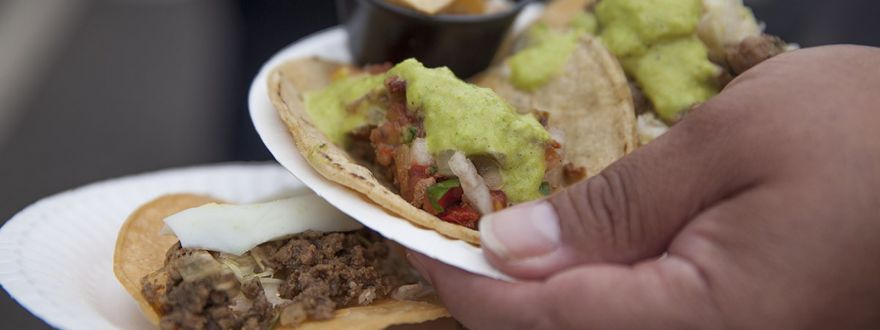Tacos: Soft Shells Made Hard Shells a Thing of the Past
 Written by
Kon-Tiki Taco
Written by
Kon-Tiki Taco
- Published in Taco Catering Blog
- Read 3316 times
Crispy tostadas originated a long time ago, but Americans turned them into hard taco shells in the 1950s. They no longer make sense in social settings.
It takes a little sleuthing to figure out if Americans do or do not like hard-shell tacos. And one must do a fair amount of research to find out why hard shell tacos ever existed in the first place. But what we were able to find is that soft shelled tacos seem to have won the hard vs. soft battle some time in the recent past.
And perhaps not a moment too soon for authentic taco catering providers. That’s because the hard shell taco is not only an invention (an adaptation, actually) from north of the border, and it’s just not good party food. Having to navigate the hard, u-shaped taco shell while wearing nice clothes, not to mention the decision to eat it sideways in an attempt to prevent it from exploding, which it does anyway, is just too hard for anyone trying to have a good time.
(Note: taco catering has made taco dining a preferred way to entertain, taking it from the mundane Taco Tuesday night at the family dinner table to the level required of weddings, corporate events, film shoots and larger family events such as graduations, bar and bat mitzvahs, and birthdays.)
So how were tacos meant to be made, and why are there two distinctly different types? A little history lesson is in order.
Tacos were a Mexican staple for at least 150 years before appearing on the streets of border towns in Texas, Arizona and New Mexico in the early 20th century. There were early versions of mobile taco cart catering with vendors selling tacos to workers and others in places like San Ysidro, Tecate, Nogales, San Luis, Laredo, and Brownsville.
But Taco Bell arrived on the scene in the early 1950s, and entrepreneur Glen Bell improvised on the tostada, a crispier version of the taco shell that was served flat with taco ingredients on top. Bell is now credited with the “fast food crunchy taco,” which obviously drew a large number of customers as his chain spread coast to coast. This is when lines were drawn between the traditionalists who preferred soft tacos and this fast nuevo cuisine that provided diners with the crunchy, and often messy, experience of the hard shell.
So hard shells had an appeal, at least for a time. And there are some for whom that is the taco experience. Why?
The answer might be found in science. Research has shown that the human taste for crunchy things – think potato chips as much as hard shell tacos – is rooted in our evolutionary history. Crunchy foods in nature, particularly vegetables, were the most ripe and therefore most tasty and perhaps less likely to be rancid or bug infested. When humans began to use fire to cook food, not only did that make more nutrients available in the food, but the crispy, tasty edges and exteriors also became associated with healthfulness.
Today, the soft-shell taco – very often situated alongside a margarita bar – has regained its place as the preferred form of the dish. That may be due to how fresh ingredients, including vegetables and sometimes-grilled fish or chicken, offer the crunchiness that is innately satisfying to diners.

